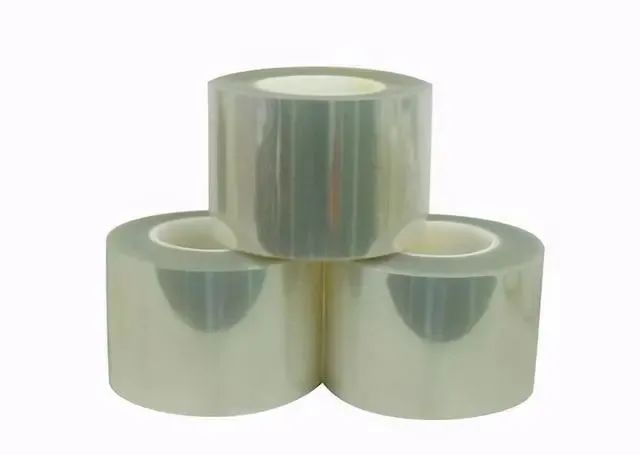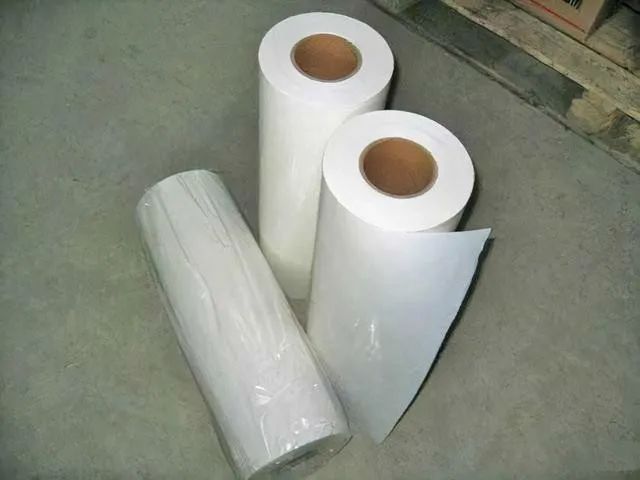

Hotline:0755-22277778
Tel:0755-22277778
Mobile:13826586185(Mr.Duan)
Fax:0755-22277776
E-mail:duanlian@xianjinyuan.cn
Single layer shielding filmIt has the characteristics of transparency, non toxicity, and non permeability, as well as good heat sealing and bag making properties, heat and cold resistance, mechanical strength, oil and grease resistance, chemical resistance, and anti adhesion properties. Therefore, this film has been widely used. Single layer films can be prepared using various processes such as extrusion blown film method, extrusion casting method, rolling method, solvent casting method, etc. Their heat sealing performance is not only related to the relative molecular weight distribution and molecular disproportionation degree of the resin, but also to the process conditions such as temperature, cooling rate, and blowing ratio during film preparation.

Single-layer film
So, how do single-layer films differ from composite films? Both the flexible packaging industry and film manufacturers need to master these issues. Die Cutting Home recommends several methods for identifying composite films and their structures.
Plastic composite packaging film is made of multiple single-layer films, and its identification method is different from single-layer films. Firstly, based on the performance characteristics of single-layer films and the requirements for composite purposes, a rough distinction can be made. For example, based on transparency, aluminum foil, aluminum plated film, etc. are generally opaque composite films; It has high barrier function and is generally a composite film. The appearance and mechanical properties of the film can roughly determine what the substrate is.

Composite film
1. Composite films generally exhibit natural curling, which is more pronounced when placed in hot water.
2. When the innermost and outermost materials of the composite film are different, the two sides of the film have different tactile sensations, which can be distinguished by careful touch.
3. Make a small incision on the film and slowly tear it diagonally, making it easy to separate layers in composite films composed of substrates with different tearing properties.
4. If the printed film cannot be rubbed off, it means that the printed layer is sandwiched between two layers of film and is a composite film.
These are relatively simple methods for identifying composite films. A more reliable method is the physical property determination method, which uses thermal analysis to obtain a thermal spectrum, and corresponding melting temperature peaks of each component will appear in the graph. In addition, the microscope method can also identify composite films, because the refractive index of various plastics is different, and the birefringence value after stretching is different. When observed in a phase contrast or polarizing microscope, the layers of the composite will present different colors, thus distinguishing between single films and composite films.
After determining it as a composite membrane, its various components should be separated and identified.
Dissolving method or solvent method
Separate the layers of the composite membrane by utilizing different resins with varying solubility or swelling properties, or by changing the interfacial tension after solvent infiltration into the interface. After separating the substrate of the composite film, it is necessary to determine which type of substrate is composite. The substrate of the peeled composite film can be analyzed to determine, but attention should be paid to the interference of the adhesive at this time.
Peel off method
Composite films made from extruded composite or dry composite materials may peel off due to inconsistent deformation after being pulled or kneaded; Perform certain heating treatment to soften the adhesive layer and peel off the films bonded together; They can also be separated based on the different melting points of crystalline polymers.
Adhesive coated (dry/wet) composite film: Single layer films have certain advantages, but also inherent disadvantages, often difficult to meet various packaging performance requirements. Multi layer composite of different substrates can complement each other's strengths and weaknesses, and play a comprehensive advantage.
Aluminum foil: 99.5% pure electrolytic aluminum is melted and pressed into foil using a rolling mill, making it an ideal substrate for soft plastic packaging. It has good gas barrier properties, water vapor barrier properties, light shielding properties, thermal conductivity, and shielding properties.
Vacuum evaporated aluminum film: Under high vacuum, low boiling point metals such as aluminum are melted, vaporized, and deposited on a plastic film on a cooling drum to form an aluminum film with good metallic luster. The aluminum plating thickness meets certain requirements, which can greatly improve the oxygen and moisture resistance of the substrate. The substrate needs to undergo corona treatment and be coated with sol.
Silicon coatingAlso known as ceramic coating, its performance will not change no matter how high the temperature and humidity are, making it suitable for making high-temperature cooking packaging bags. There are two types of coatings: one is silicon oxide SiOx, the smaller the X, the better the barrier properties; Two is Al2O3. There are physical vapor deposition and chemical vapor deposition methods for coating.
Extrusion coated composite film: In an extruder, thermoplastic is cast onto paper, foil, or plastic substrates that are ready for approval through a T-shaped die, or extruded resin is used as an intermediate adhesive to press other film substrates together while hot, forming a "sandwich" type composite film. To improve the composite fastness, corona treatment is required and anchor coating agent is applied. Extrusion composite film can be reverse printed, with precise control of layer thickness, low solvent residue, and low price.
Co extruded composite film: Using two or three extruders, sharing a composite die, laminating several compatible thermoplastic materials to produce multi-layer films or sheets. Co extruded composite film can only be printed on the front and cannot be printed on the back. Compared with dry composite film and extrusion cast film, it is difficult to control the thickness of each layer. No adhesive or anchor coating is used, with good hygiene and no pollution. The co extruded composite film has the lowest cost.
High barrier filmIt is a thin film with a multi-layer structure. This film can effectively prevent the infiltration of gases such as oxygen, which can cause the proliferation of microorganisms; Prevent oxidation of wrapped items; Prevent the leakage of fragrance, solvents, etc. from the product. The commonly known high barrier and high-strength materials, such as EVAL, PVDC, PET, PAN, selar PA, etc., can be used to make packaging films, which can significantly extend the shelf life of food or replace traditional rigid packaging materials with good barrier properties.

Advanced Institute (Shenzhen) Technology Co., Ltd, © two thousand and twenty-onewww.leird.cn. All rights reservedGuangdong ICP No. 2021051947-1 © two thousand and twenty-onewww.xianjinyuan.cn. All rights reservedGuangdong ICP No. 2021051947-2